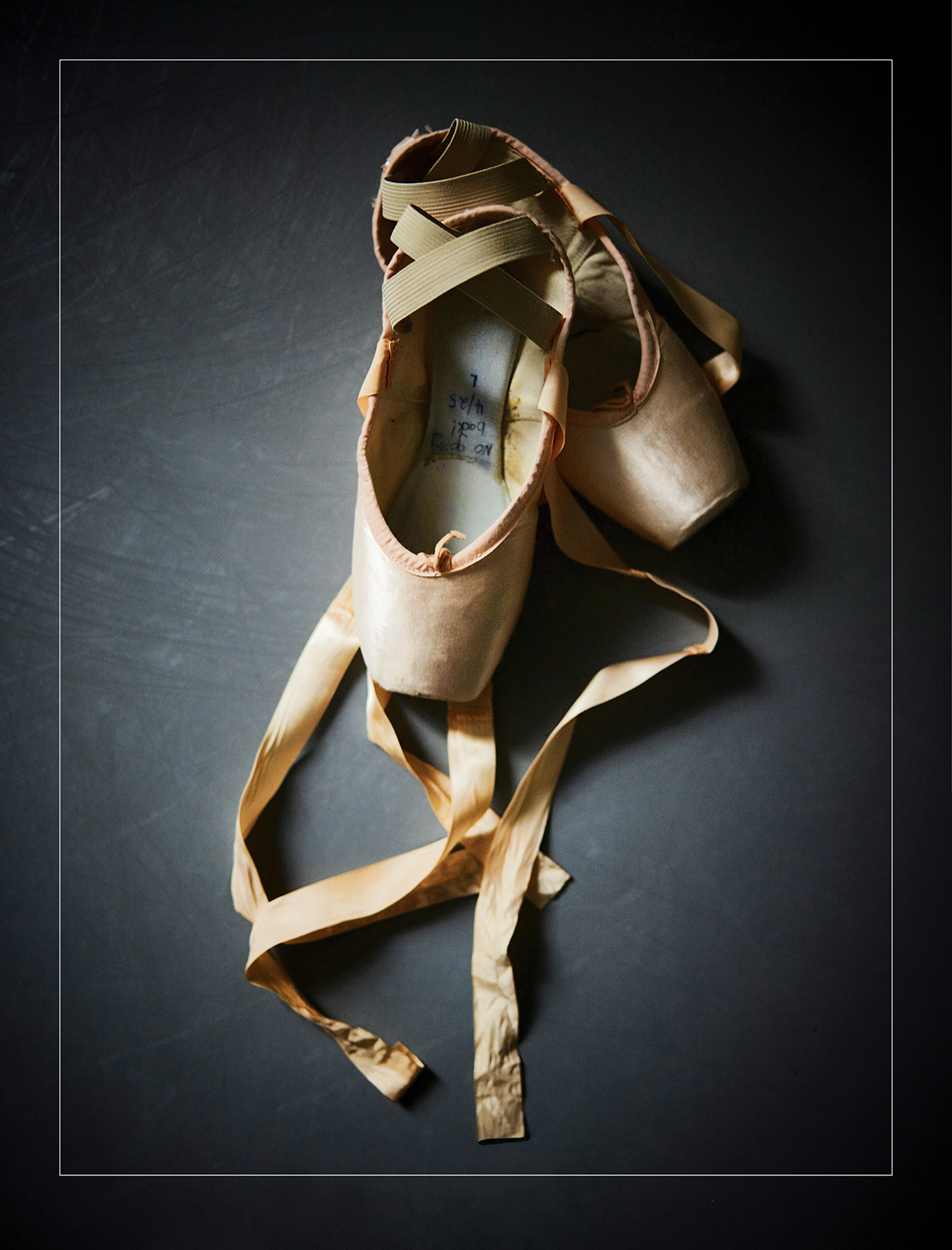My (Tor)Mentor

Photograph by Christopher Churchill
The first time Lissa Curtis met ballet teacher Cosmin Marculetiu, she was nervous and wanted to impress. He was standing outside his studio in Burlington, smoking a cigarette before class. At 44, Marculetiu was fairly fit, clean-shaven, and had a full head of wild, curly hair. Once praised by the Boston Globe for his “rakish charm” on stage, the former professional dancer from Romania had a well-known reputation around Boston: an old-world master who issued instructions in French and could develop ambitious dancers with dreams of becoming stars in Europe. If all went well, Curtis hoped he would pair her with one of his dancers, which could lead to coveted roles in upcoming productions.
At 5-foot-8 with raven hair and ivory skin, Curtis, 23 at the time, started performing at preschool age. As the oldest of three children, with a typical type-A personality, she’d always known exactly what she wanted: to dance for a living. “She was a perfectionist even before she was a ballerina,” says her mother, Barbara Silk, who homeschooled Curtis until high school, where she earned high honors at Portsmouth Christian Academy and won more than $23,000 through the Miss New Hampshire Scholarship Program. She gained attention from local newspapers for her community service and fundraising to fight breast cancer after three family members succumbed to the disease. When someone who’d been texting behind the wheel drove into and seriously injured her mother, Curtis turned her sorrow into positive action by campaigning for greater awareness about distracted driving, even posing for a photograph with the governor. As a ballerina, she turned professional at 14 and grew into the kind of performer you couldn’t tear your eyes from: regal without being haughty, with a poise undoubtedly honed during her pageant days.
Minutes into the class, Curtis’s nerves began to settle. She remembers Marculetiu giving corrections—ribs in, more turn-out, hips under!—to the room full of dancers. When he praised her well-executed movements, she beamed inside. Elite dancers, Curtis says, crave that attention from artistic directors and instructors—it means they see something special in you. Still, she was surprised, she says, when he pulled her aside after class and told her that not only would he cast her as the lead in a production of The Nutcracker, he also wanted her for his new international touring ballet company. “I want you here,” she remembers him saying.
Not long after, in the fall of 2013, Curtis began training at Marculetiu’s studio, New England Movement Arts (NEMA). At least twice a week, she drove from her home in Dover, New Hampshire, down to Burlington to train with her new instructor as well as his wife, Melinda, a former professional dancer and cofounder of both NEMA and the couple’s other dance institution, International Ballet Academy of Norwell. Marculetiu “was extremely charming,” Curtis says. “Every morning was a huge hug, kiss-kiss, ‘Oh, how are you, baby doll? So good to see you.’ Just over-the-top interested, always giving hugs to people. I blew that off because I figured, Oh, he’s Eastern European, that’s kind of what they do.”
After the holidays that season, Curtis says, Marculetiu announced he would be judging a prestigious international ballet competition in Sibiu, Romania, and invited more than a dozen dancers to enter. The event would showcase artists of all ages as they competed for cash prizes, valuable industry connections, and coveted company contracts. When Curtis expressed interest, she says, Marculetiu told her he could introduce her to colleagues from all over the world and help land her guest-artist appearances at whatever company she wanted. Curtis was excited. A star in the Seacoast ballet world, she now had the chance to take her talents to the next level. Never having danced in an international competition, though, she asked performers who’d previously traveled to the event with Marculetiu about their experiences. Everyone seemed to agree: It was a great opportunity.
Weeks later, on March 18, 2014, Curtis kissed her husband, Phillip, goodbye in Terminal E at Logan. The two had been married for just over a year, and flying overseas for the first time felt like a big trip to take without him. A math teacher at the time, Phillip was in the middle of the school year, so Curtis had planned to go with a fellow dancer instead. She was disappointed when he backed out at the last moment. Curtis was jittery as she headed toward the departure gate, but was glad she was traveling with Marculetiu and his college-age son, Alex, who worked for NEMA as a handyman and stage manager. It was reassuring that they were so familiar with a country she knew nothing about.
At first, the three were seated in separate rows. Partway through the flight, though, Curtis says Marculetiu beckoned her to take the open seat next to him. They discussed the competition, Curtis says, and the cabin lights dimmed for the overnight flight. Curtis pulled a blanket over her before falling asleep with her head on her coach’s shoulder.
Anyone following Curtis on Twitter or Instagram over the next week saw a dancer having the time of her life. She posted photos of her Esmeralda solo on stage and of smiling dancers awaiting the awards ceremony, all captioned with bright exclamations. “Can’t believe a week has flown by in Romania,” she posted on Instagram on March 25, 2014. “Thank you so much for all the wonderful memories and experiences Cosmin and Alex! And thank you Cosmin and Melinda Marculetiu…for making me feel so confident and beautiful…I feel so blessed.” In the accompanying photo collage, Curtis and Marculetiu stand with their arms around each another’s shoulders, smiling cheek to cheek.
What her followers had no way of knowing, according to Curtis, was that it was all an act—her greatest performance yet.

Ballerina Lissa Curtis made her private struggles public when she filed a lawsuit against her former dance teacher in a Massachusetts court. / Photograph by Christopher Churchill
Like many dancers, Curtis has always been hard on herself. Growing up in the ballet world brings with it a set of pressures—to look a certain way, have the ideal body, be the director’s favorite—that can wreak havoc on any psyche. Although most dancers will say that Hollywood’s Black Swan characters are overblown stereotypes, elements of the script certainly echoed Curtis’s life. She freely admits that she’s suffered body-image issues and struggled with eating disorders in the past, and she credits her family for pulling her through those times. Attracted to the rigorous demands of the art and the discipline it takes to meet those demands, Curtis never tired of sore muscles or from peeling her satin pointe shoes from her bloody, battered feet at the end of an exhausting class. When you train as a dancer, you learn to embrace those painful moments, or to compartmentalize when necessary to do your job and play a part. “At the end of class you always give a révérence, which is a bow to the teacher,” Curtis says. “It’s an art form that’s built on extreme respect and discipline. And it’s shaped a large part of who I am.”

